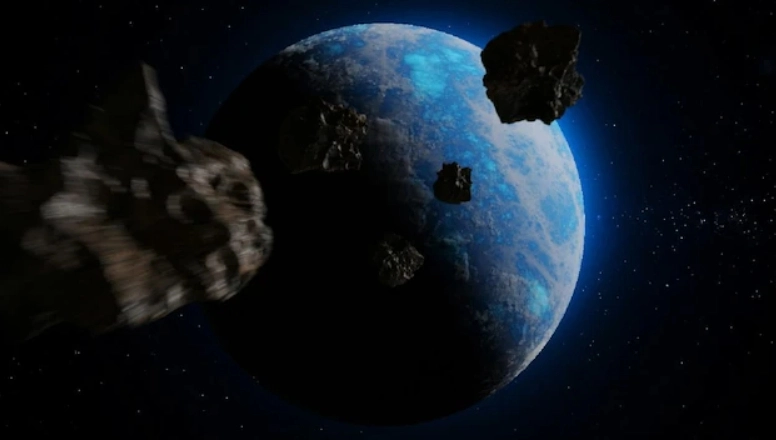
A leading UK scientist has sparked worry by claiming that efforts to deflect a massive asteroid, 2024 YR4, may be too late. The space rock remains high on NASA’s watch list for potential Earth impacts.
The claim was made by Dr Robin George Andrews, a London-based volcanologist and author, whose social media post also said that current asteroid deflection methods “might not be able to stop 2024 YR4".
The asteroid, first detected in December 2024, is approximately the size of a building and has a 1-in-43 chance of colliding with Earth in 2032.
YR4 has been dubbed a “city killer" due to its potential destructive force and NASA continues to monitor its trajectory closely while evaluating possible countermeasures.
Despite the slim odds of catastrophe, Dr Robin George Andrews has warned that Earth could be in danger if asteroid 2024 YR4 is indeed on a collision course.
The UK-based scientist expressed scepticism over the effectiveness of NASA’s Double Asteroid Redirection Test (DART), which successfully altered the orbit of the 580-foot-wide asteroid Dimorphos in 2022.
This high-impact mission reduced the asteroid’s orbit by over 30 minutes.
While that mission proved humans could shift an asteroid’s trajectory, Dr. Andrews suggested it might not be enough to deflect a fast-approaching space rock of this scale.
While he admitted that the test was highly effective, he cautioned that it does not guarantee the ability to deflect any asteroid at will.
“So much could go wrong if we try to hit it with something like DART," said the researcher.
Dr. Andrews explained that many asteroids are not solid rocks but loose collections of sand, dirt, and boulders held together by weak gravity. If hit, they could break apart instead of changing direction, sending smaller but still dangerous fragments toward Earth. He compared this to “turning a cannonball into a shotgun spray."
Even if a deflection attempt worked, there might not be enough time to make a big difference. The scientist pointed out that asteroid 2024 YR4 is expected to arrive in just 8 years while planning, building, and carrying out a deflection mission could take 10 years or more.
“With only a few years down the line, we could accidentally deflect it—but not enough to make it avoid the planet," Andrews said. “Then, it still hits Earth, just somewhere else that wasn’t going to be hit."
If asteroid 2024 YR4 collides with Earth, it could destroy the scale of the Tunguska event, which flattened 80 million trees in Siberia in 1908, according to Space.com.
Despite the risk, Dr Robin George Andrews reassured the public that the asteroid would “probably miss Earth." However, he cautioned that attempts to deflect it could backfire, saying, “We have to be wary of trying to save the world but accidentally making the problem worse. Maybe we’ll just have to get out of the asteroid’s way this time."
Meanwhile, NASA has turned to the James Webb Space Telescope, the world’s most powerful, to study 2024 YR4 and assess the potential damage if an impact were to occur.